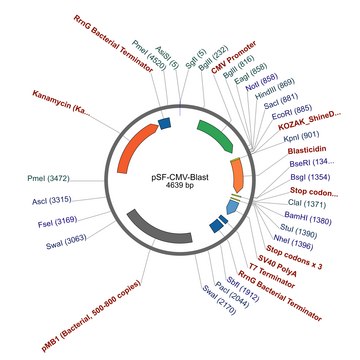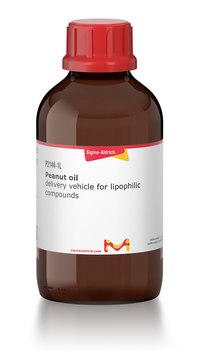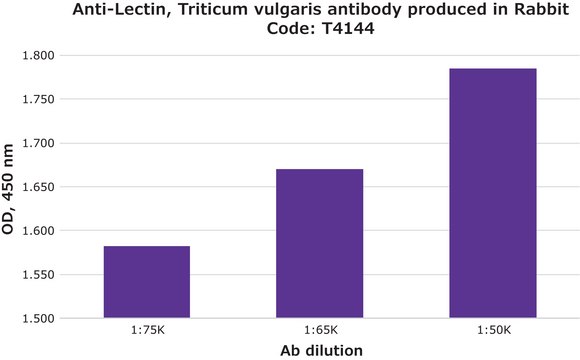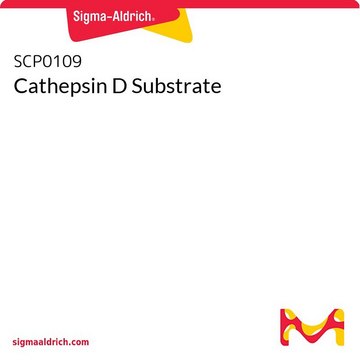推荐产品
表单
buffered aqueous solution
分子量
size 4159 bp
菌种筛选
kanamycin
哺乳动物细胞筛选
blasticidin
复制起点
pUC (500 copies)
肽切割
no cleavage
启动子
Promoter name: CMV
Promoter activity: minimal promoter
Promoter type: mammalian
报告基因
none
运输
ambient
储存温度
−20°C
一般描述
Here the blasticidin resistance gene is under transcriptional regulation of the minimal CMV promoter giving only low level expression in most mammalian cells. Expression of the resistance gene can be regulated by inserting additional regulatory components upstream of the promoter using a specially-positioned MCS for example sites that respond to specific transcription factors or to externally-applied drugs such as doxycycline. In this way sophisticated constructs can be prepared that provide blasticidin resistance only under certain pre-defined conditions.
Promoter Expression Level: This plasmid contains the minimal CMV immediate early promoter with a multiple cloning site immediately upstream that allows transcription factor binding sites to be inserted. This allows tissue specific or physiologically responsive promoters to be created.
Promoter Expression Level: This plasmid contains the minimal CMV immediate early promoter with a multiple cloning site immediately upstream that allows transcription factor binding sites to be inserted. This allows tissue specific or physiologically responsive promoters to be created.
应用
Cloning in a gene: This plasmid contains a gene within the main multiple cloning site (NotI-ClaI). Any plasmid that we sell where the gene is this configuration will be located in the exact same position in relation to the start and stop codon of the gene. The only exceptions to this rule are fusions proteins where the fusion gene may be positioned at the front or end of the MCS to allow gene fusion.
By positioning all of our genes in the same location it allows them to be transferred between plasmids using the same cloning method and restriction sites regardless of the plasmid being used from our product range. Inserting a new gene into this plasmid should be easily possible using a range of standard restriction enzyme sites that flank the gene currently in the vector.
Multiple cloning site notes: In the multiple cloning site there are two important restriction sites called BsgI and BseRI sites. These sites both cut the DNA at the same position and cleave the stop codon of the gene in the multiple cloning site in this plasmid thereby producing a TA overhang. This overhang is compatible with any of our peptide or reporter fusion tag plasmids also cut with either of these enzymes. This allows seamless C-terminal fusions to be made with the gene in this multiple cloning site using a single cloning step from our C-terminal peptide and reporter tag product range. Normally the easiest method is to clone the C-terminal tag from our other plasmid products into this plasmid using BsgI or BseRI and the downstream ClaI restriction site.
BseRI and BsgI sites are non-palindromic and cleave a defined number of bases away from their binding sites. This allows them to cut the upstream stop codon in the gene in this plasmid regardless of the gene sequence.
By positioning all of our genes in the same location it allows them to be transferred between plasmids using the same cloning method and restriction sites regardless of the plasmid being used from our product range. Inserting a new gene into this plasmid should be easily possible using a range of standard restriction enzyme sites that flank the gene currently in the vector.
Multiple cloning site notes: In the multiple cloning site there are two important restriction sites called BsgI and BseRI sites. These sites both cut the DNA at the same position and cleave the stop codon of the gene in the multiple cloning site in this plasmid thereby producing a TA overhang. This overhang is compatible with any of our peptide or reporter fusion tag plasmids also cut with either of these enzymes. This allows seamless C-terminal fusions to be made with the gene in this multiple cloning site using a single cloning step from our C-terminal peptide and reporter tag product range. Normally the easiest method is to clone the C-terminal tag from our other plasmid products into this plasmid using BsgI or BseRI and the downstream ClaI restriction site.
BseRI and BsgI sites are non-palindromic and cleave a defined number of bases away from their binding sites. This allows them to cut the upstream stop codon in the gene in this plasmid regardless of the gene sequence.
序列
To view sequence information for this product, please visit the product page
分析说明
To view the Certificate of Analysis for this product, please visit www.oxfordgenetics.com.
相关产品
产品编号
说明
价格
储存分类代码
12 - Non Combustible Liquids
闪点(°F)
Not applicable
闪点(°C)
Not applicable
法规信息
新产品
Diana Romero et al.
Carcinogenesis, 37(1), 18-29 (2015-10-28)
Dickkopf-3 (Dkk-3) is a secreted protein whose expression is downregulated in many types of cancer. Endogenous Dkk-3 is required for formation of acini in 3D cultures of prostate epithelial cells, where it inhibits transforming growth factor (TGF)-β/Smad signaling. Here, we
Geoffrey M Lynn et al.
Nature biotechnology, 33(11), 1201-1210 (2015-10-27)
The efficacy of vaccine adjuvants such as Toll-like receptor agonists (TLRa) can be improved through formulation and delivery approaches. Here, we attached small molecule TLR-7/8a to polymer scaffolds (polymer-TLR-7/8a) and evaluated how different physicochemical properties of the TLR-7/8a and polymer
Jin-Gyoung Jung et al.
PLoS genetics, 10(10), e1004751-e1004751 (2014-10-31)
The Notch3 signaling pathway is thought to play a critical role in cancer development, as evidenced by the Notch3 amplification and rearrangement observed in human cancers. However, the molecular mechanism by which Notch3 signaling contributes to tumorigenesis is largely unknown.
Alexander C Cerny et al.
PLoS genetics, 11(10), e1005578-e1005578 (2015-10-29)
Recycling of signaling proteins is a common phenomenon in diverse signaling pathways. In photoreceptors of Drosophila, light absorption by rhodopsin triggers a phospholipase Cβ-mediated opening of the ion channels transient receptor potential (TRP) and TRP-like (TRPL) and generates the visual
我们的科学家团队拥有各种研究领域经验,包括生命科学、材料科学、化学合成、色谱、分析及许多其他领域.
联系技术服务部门






